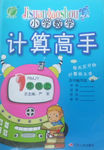题目内容
The dream of flying into outer space, cherished by the Chinese people for centuries, will soon come true.
China launched its fourth unmanned spacecraft (飞船)“Shenzhou Ⅳ” on December 30 at the Jiuquan Satellite Launch Centre in Gansu Province. It was the 27th consecutive(连续的 )and successful launch of China - made rockets since October 1996. This launch has made it more realistic for China to send a person into space on its own following Russia and the USA.
Qi Faren,leading designer of the spacecraft system, said all the functions (功能) designed for manned flights have withstood (经受住)the test of three previous, successful launches and return landings of the “Shenzhou” spaceships.
China launched the “Shenzhou Ⅰ ”, “Shenzhou Ⅱ ”and “Shenzhou Ⅲ ”spacecrafts in 1999,2001 and 2002 respectively.
“Shouzhou Ⅳ” was to make it a more comfortable place in which astronauts can live and work. All parts of the application system for manned flight are aboard the “Shenzhou Ⅳ”craft in all test flights.
China’s manned flight programme began in 1992. A number of unmanned test flights will be launched before Chinese astronauts are sent into space.
Leading scientists in charge of China’s manned space programme said the successful launch of the “Shenzhou Ⅳ” laid a solid foundation for the country’s future task of sending Chinese astronauts to outer space.
The spacecraft returned to the earth on January 5, after completing seven experiments in space.
Officials at the centre said that“ Shenzhou Ⅴ”, a manned spacecraft, is expected to be launched later this year.
How many countries can send a person into space on its own by now?
A. 2. B. 3.
C. 4. D. Not mentioned.
China’s manned flight programme began in ________.
A. 1992 B. October 1996.
C. 1999 D. January 2003
As a matter of fact, ________ .
A. “Shenzhou Ⅴ ”has been launched
B. “Shenzhou Ⅳ” was a manned spacecraft
C. “Shenzhou Ⅲ ”and“ Shenzhou Ⅳ” were not launched in the same year
D. the dream of man flying into outer space has come true in China
Which is the most suitable title for the passage?
A. The Successful Launching of “Shenzhou Ⅳ ”.
B. The Landing of “Shenzhou Ⅳ ”.
C. Chin a’s Manned Flight Programme.
D. The Third Country Sending a Person into Outer Space.
【小题1】A
【小题2】A
【小题3】B
【小题4】A
解析:
【小题1】第二段提到“神舟四号”使中国有望继俄美之后第三个载人飞船的国家,因此选A。
【小题2】 第六段第一句说中国在1992年开始这一工程。
【小题3】 文中说神舟系列飞船都有载人功能(all the functions designed for manned flights),但还没有将人送入太空。
【小题4】 全文围绕“神舟四号”的成功发射展开描写。

 计算高手系列答案
计算高手系列答案
| |||||||||||||||||||||||||||||||||||||||||||||||||||
| |||||||||||||||||||||||||||||||||||||||||||||||||||||||||||
| |||||||||||||||||||||||||||||||||||||||||||||||||||||||||||||||||||||||||||||||||||||||||||||||||||||||||||||||||||||||||||||||||||||||||||||||||||||||||||||||||||||||||||||||||||||||||||||||||||||||||||||||||||||||||||||||||||||||||||||||||||||||||||||||||||||||||||||||||||||||||||